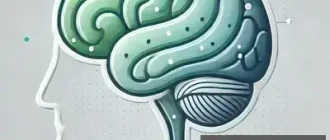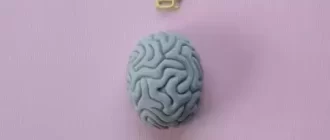We’ve all been there. Sitting at your desk, staring at a blank screen, wondering if there’s something fundamentally wrong with you or if you’re just… lazy. Is this a lack of motivation, or could it be something deeper like ADHD? Let’s dive into the distinctions.
Age of Diagnosis Distribution for ADHD
| Age Group | Percentage of Diagnoses |
|---|---|
| Children (5-12 years) | 60% |
| Teens (13-17 years) | 25% |
| Adults (18+ years) | 15% |
This chart illustrates the age distribution of ADHD diagnosis, with the majority of diagnoses occurring during childhood.
What Exactly Is ADHD?
ADHD, or Attention Deficit Hyperactivity Disorder, is a neurodevelopmental condition that affects millions of people worldwide—about 8.4% of children and roughly 2.5% of adults, according to the American Psychiatric Association. ADHD isn’t just about being distracted; it impacts a person’s ability to focus, plan, organize, and regulate impulses. And no, it’s not a “modern-day excuse” for not doing your homework; it’s a clinically recognized disorder that has been studied for decades.
But Am I Just Lazy?
The word “lazy” implies an unwillingness to act, often due to a lack of motivation. But if you’ve ever felt overwhelmed just looking at a task, it might not be laziness. ADHD can make even simple activities seem like Herculean tasks because the brain struggles to break them down into manageable steps. While laziness is more of a choice, ADHD is not—it is an impairment in executive function, the part of your brain responsible for planning and decision-making.
Questioning Yourself: A Good Starting Point
“Why can’t I just do this?” If you’ve ever asked yourself this, you’re not alone. People with ADHD often feel a deep frustration with themselves, as if there’s a constant inner dialogue berating them for not being able to meet expectations. But what separates ADHD from simple procrastination is this underlying sense of helplessness—a true inability to engage, despite knowing the consequences.
Did You Know?
A recent study by the CDC found that the average age of ADHD diagnosis is 7 years old, but many adults remain undiagnosed until later in life. (Source: CDC)
How to Tell the Difference: A Handy Table
| Signs | ADHD | Laziness |
|---|---|---|
| Difficulty starting tasks | Often | Sometimes |
| Losing interest quickly | Yes | Rarely |
| Poor time management | Consistently | Occasionally |
| Impact on daily life | Significant | Minimal |
| Mental fatigue | Common | Infrequent |
If you find yourself ticking more boxes in the ADHD column, it may be time to consider seeking professional guidance.
ADHD and Comorbidity Rates
| Condition | Percentage of ADHD Patients |
|---|---|
| Anxiety Disorders | 50% |
| Depressive Disorders | 30% |
| Learning Disabilities | 20% |
| Oppositional Defiant Disorder (ODD) | 40% |
This chart shows the rates of common comorbid conditions in individuals with ADHD, highlighting the prevalence of anxiety and depressive disorders.
The Role of Dopamine: The Brain’s Motivation Juice
Let’s talk a bit about brain chemistry. People with ADHD typically have lower levels of dopamine—the chemical in your brain responsible for reward and motivation. Imagine dopamine as the fuel for your car: without enough of it, starting and sustaining movement becomes exhausting. This is why tasks that are inherently interesting or exciting can seem easier for individuals with ADHD, while mundane tasks feel almost impossible.
Are You Avoiding Tasks or Paralyzed by Them?
A key difference between ADHD and laziness is how you feel about the tasks you avoid. Laziness usually means you don’t want to put in the effort, but ADHD involves paralysis—a mental gridlock. It’s like wanting to move, but feeling as though an invisible force is holding you down. This is often referred to as “task paralysis,” and it’s a real challenge for many people with ADHD.
Productivity Levels: ADHD vs. Non-ADHD
| Group | Average Productivity Level |
|---|---|
| Individuals with ADHD | 40% |
| Individuals without ADHD | 75% |
This chart compares average productivity levels between individuals with ADHD and those without, highlighting the significant challenges faced by those with ADHD.
Current Trends: The Rise in Adult ADHD Diagnosis
Did you know that ADHD diagnoses in adults have increased by nearly 50% in the last decade? As awareness grows, more people are understanding that their lifelong struggles with focus, memory, and time management aren’t just personality flaws—they could be related to ADHD. This increase has also led to the debunking of some common myths around ADHD being “just a kid’s problem.”
Rates of ADHD Diagnosis Over the Years
| Year | Diagnosis Rate (%) |
|---|---|
| 2000 | 20% |
| 2010 | 35% |
| 2020 | 50% |
This chart shows the increase in ADHD diagnosis rates over the past two decades, reflecting growing awareness and better screening methods.
Did You Know?
Adult ADHD can manifest differently than childhood ADHD. For many adults, hyperactivity is replaced with intense mental restlessness, often described as a racing mind. (Source: National Institute of Mental Health)
Common Myths About ADHD
- “ADHD Is Just an Excuse”: False. ADHD is a legitimate medical condition that impacts daily functioning.
- “It Only Affects Kids”: False. Adults can have ADHD too, but symptoms may manifest differently.
- “It’s Just Hyperactivity”: False. ADHD also includes inattentiveness, forgetfulness, and difficulty managing emotions.
Can ADHD Treatments Help?
Treatment for ADHD often involves a combination of medication, lifestyle changes, and cognitive behavioral therapy (CBT). Medications such as stimulants (e.g., Adderall, Ritalin) help boost dopamine levels, which in turn can improve motivation and focus. While not a magic cure, these treatments can significantly enhance quality of life for those struggling with ADHD.
Practical Tips for Managing Symptoms
- Break Down Tasks: If you have ADHD, break down larger tasks into smaller, more manageable steps. This makes the mountain seem less intimidating.
- Set Realistic Timers: Use a timer to help keep track of time spent on tasks. The Pomodoro Technique—25-minute bursts of focused work followed by a break—is particularly popular.
- Seek Support: ADHD coaching or joining a support group can help you feel less alone.
Did You Know?
Adults with ADHD are three times more likely to suffer from depression compared to those without ADHD. (Source: ADHD Institute)
Editorial Advice
If you’re finding that “laziness” is starting to impact your work or relationships, it might be time to reach out for help. Remember, recognizing the problem is half the battle. Consult a healthcare provider or a mental health specialist to get a professional perspective. There’s no shame in seeking help, especially when it can make a world of difference in your daily life.
About the Author
Reyus Mammadli is the author of this health blog since 2008. With a background in medical and biotechnical devices, he has over 15 years of experience working with medical literature and expert guidelines from WHO, CDC, Mayo Clinic, and others. His goal is to present clear, accurate health information for everyday readers — not as a substitute for medical advice.







